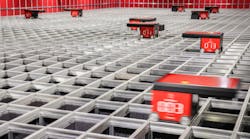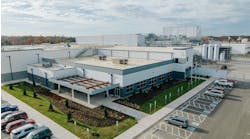One of the things that we’ve heard every so often is that “culture will beat strategy every time,” and I’m one who believes this is mostly true. I also believe that the best-performing companies have a “culture of challenge” – meaning that all ideas are worthy of exploring, and nothing is off base as it relates to better serving customers or improving productivity. Combine this with a strategic plan that quickly and successfully executes great ideas.
About two years ago, I asked our leadership team, “How can we improve service levels to our customers by identifying bottlenecks in our organization?” and “How could we improve?” I challenged them, and in turn, they brought to the table ideas that challenged our current business processes and organizational structure. We have a “culture of challenge” that exists at all levels of our organization, and the results are leading to more automation, improved customer service levels and overall improved performance.
You can get the same results with your own culture of challenge.
As a result of challenging the cultural status quo, over the past few years, we have been installing automation and artificial intelligence (AI) throughout the company. Most recently, we began looking at our 75-year-old model for moving product through our distribution centers. Not much had changed over the years, other than adding more conveyors, empty tote return systems and maybe a package sorter/diverter here and there to mechanically redirect boxes into the proper shipping lanes. But no real automation in the distribution centers was installed until last year.
In 2020, during the pandemic of a lifetime, in one of our primary distribution centers we invested in automation to change the way we manage inventory throughout the company. And it all started with the challenge, “How do we improve our handling and shipping process to provide our customers the best service available in our industry?”
The answer was a combination of an automated goods-to-person system combined with vertical lift modules. In our “pilot” distribution center, the result exceeded 500% in productivity improvement over traditional pick-and-ship methods, with a return on invested capital (ROIC) of approximately three years.
Now that the concept has been proven, we will continue to strategically implement these automated machines throughout the company to better serve our customers. Employees get to learn new technology and become more tech-savvy, while letting the machines do the “heavy lifting” – and our customers benefit from more stocked SKUs and faster delivery. We believe this win-win would not have been possible without a culture of challenge that allowed us to believe we could provide a better solution.
In the food processing industry, a clean and safe environment is critical; speed through the process is very important as many of the food items processed are perishable, and wasted ingredients is money lost or washed down the drain! So how can automation play an important role in the food processing industry today and in the future?
As I mentioned above, we at Motion asked ourselves, “How can we improve service levels to our customers?" and “How could we improve?” And we found automation to be a large part of the answer to both questions. I suspect if you ask yourself, your company, those same questions, you'll come up with the same answer.


